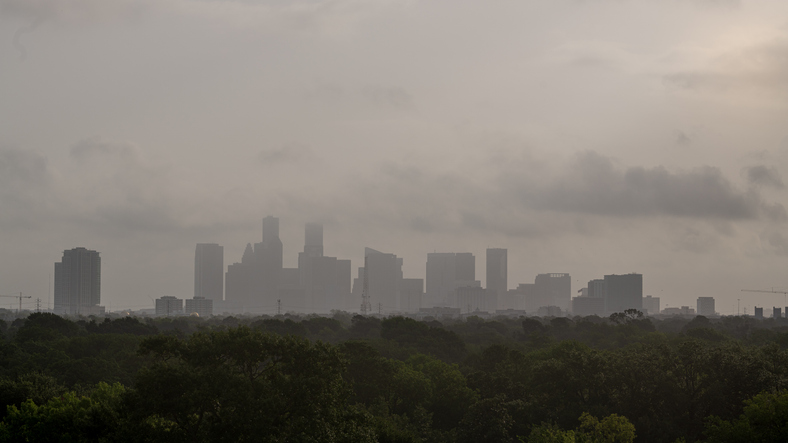Every summer, Houstonians are met with an unexpected visitor: Saharan dust. Blown thousands of miles from the Sahara Desert in Africa, this fine, dry dust makes its way across the Atlantic Ocean and eventually settles over parts of the Gulf Coast, including Houston. While it may create stunning sunsets, it also brings a wave of health concerns, especially for those with allergies, asthma, or sinus issues.
What Is Saharan Dust?
Saharan dust is a mass of dry, mineral-rich particles that originate in the world’s largest desert. These particles are picked up by strong winds and carried across continents by the Saharan Air Layer (SAL), a dry, warm air mass that typically forms in late spring through early fall. The dust can travel over 5,000 miles and linger in the atmosphere, sometimes descending to ground level where it affects air quality.
How Does It Affect Breathing?
When Saharan dust settles in the air, it reduces air quality and can trigger respiratory problems. The tiny dust particles can irritate the nasal passages, throat, and lungs. For individuals with preexisting respiratory conditions such as asthma, chronic sinusitis, or allergies, the exposure can lead to:
- Increased sinus congestion
- Sneezing and itchy eyes
- Coughing and wheezing
- Shortness of breath
- Asthma flare-ups
Even healthy individuals may experience mild irritation, particularly during high-concentration days.
When Does Saharan Dust Reach Houston?
Saharan dust events typically occur between June and August, though they can happen as early as May and linger into September. In Houston, residents often notice a hazy sky and milky-white sun when the dust is at its peak. Local weather forecasts and air quality alerts often track these events, especially when fine particulate matter are high.
Safety Tips for Allergy, Asthma, and Sinus Sufferers
If you suffer from allergies, asthma, or sinus conditions, taking precautions during Saharan dust events is essential. Here’s how to protect your respiratory health:
- Monitor Air Quality: Check local air quality indexes (AQI) daily. On days with poor air quality, limit outdoor activities.
- Stay Indoors During Peak Hours: If dust levels are high, stay inside during mid-morning to evening hours when dust tends to settle.
- Use Air Purifiers: HEPA-filter air purifiers can help reduce indoor dust particles and improve breathing.
- Keep Windows Closed: Prevent dust from entering your home by keeping windows and doors shut.
- Wear a Mask Outdoors: A high-quality mask (like N95) can reduce your exposure when spending time outside is necessary.
- Follow Your Treatment Plan: Be diligent about taking allergy medications, using nasal sprays, or carrying rescue inhalers as prescribed.
- Rinse Sinuses: Use saline rinses to clear dust and allergens from your nasal passages.
When to Seek Medical Help
If you notice increased symptoms such as wheezing, persistent coughing, or shortness of breath, contact your doctor. Allergy & ENT Associates can help you manage seasonal respiratory challenges with personalized care and support.
Need Help Breathing Easier This Summer? Book an appointment with one of our Houston area allergy and ENT specialists. We’ll help you breathe easier—dust or no dust.


